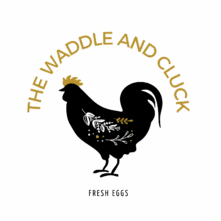
Blue-eyed grass is not grass but a member of the iris family and is found in prairie settings. Flowers are violet and are seen at the tip of a long, flat stalk. Native Americans used the plant to make tea to treat diarrhea, stomach ache and hay fever.

Fringed Puccoon is a bright yellow, tubular flower seen in dry prairies from April through June. Native Americans made a tea from the leaves to treat coughs and colds. The term “puccoon” is a Native American word meaning “red dye.” The roots of the plant were used to make a red dye by the Powhatan Tribe, the tribe of the Jamestown settlement.

Missouri violet is found in moist meadows in light shade to partial sun April through May. Flowers are ½”–¾” across and have 5 blue-violet petals. The leaves are high in vitamins A and C and can be used in salads or cooked as greens.

Prairie rose gentian, also called meadow pink, is widely distributed in dry prairies from May to July. The flower has 5 petals and a yellow center. Gentian is a symbol of justice and victory. It is called the “flower of victory” because of its upward flowering shape. I love this flower because its bright pink color contrasts with our green meadows.

Prairie iris, also called prairie pleat leaf, is a strikingly beautiful sky-blue to purple wildflower. White ones also occur. The flower has six petals and three bright yellow stamens. Each flower lasts only a day. They open in the morning and curl up before midafternoon. We see them in April and May.

Prairie ragwort, also called butterweed, is a bright yellow flower belonging to the aster family. Plants are found in dry upland prairies from April through June. Flowers occur in flattened clusters at the top of 2-foot stems. The plants are poisonous to humans and livestock. They are used in folk medicines to treat delayed or irregular menses.

Queen Anne’s lace was named for Queen Anne of Great Britain, who lived from 1665 to 1714. It looks like a lace doily. This is the most abundant wildflower on our property. It covers the meadows in late spring and early summer. It’s a biennial, which means the flowers appear in the second year of growth. It’s also called “wild carrot” and belongs to the carrot family.
Today’s carrots were bred years ago from wild Queen Anne’s lace. It’s an introduced plant, having been brought to North America by European settlers. It is now a common wildflower. The carrot-like root is edible while young but gets hard and woody with age. The flowers and seeds have been used as a method of birth control for centuries. They can also induce abortion. We see the flowers from May to September.









